Advanced Process Control For Ultrafiltration Membrane Water Treatment System
Advanced Process Control For Ultrafiltration Membrane Water Treatment System
Source: https://www.elsevier.com
Author: Chun Ming Chew, Mohamed Kheireddine Aroua , Mohd Azlan Hussain
Usually dispatched in 2 to 3 days
Usually dispatched in 2 to 3 days
Category:
Researches
Only logged in customers who have purchased this product may leave a review.
Related products
Artificial Neural Network Model for the Prediction of Groundwater Quality
The present article delves into the examination of groundwater quality, based on WQI, for drinking purposes in Baghdad City. Further, for carrying out the investigation, the data was collected from the Ministry of Water Resources of Baghdad, which represents water samples drawn from 114 wells in Al-Karkh and Al-Rusafa sides of Baghdad city. With the aim of further determining WQI, four water parameters such as (i) pH, (ii) Chloride (Cl), (iii) Sulfate (SO4), and (iv) Total dissolved solids (TDS), were taken into consideration. Additionally, to anticipate changes in groundwater WQI, IBM® SPSS® Statistics 19 software (SPSS) was used to develop an artificial neural network model (ANNM). With the application of this ANNM model, the results obtained illustrated high prediction efficiency, as the sum of squares error functions (for training and testing samples) and coefficient of determination (R2), were found to be (0.038 and 0.005) and 0.973, respectively.
Artificial Neural Network Model for the Prediction of Groundwater Quality
The present article delves into the examination of groundwater quality, based on WQI, for drinking purposes in Baghdad City. Further, for carrying out the investigation, the data was collected from the Ministry of Water Resources of Baghdad, which represents water samples drawn from 114 wells in Al-Karkh and Al-Rusafa sides of Baghdad city. With the aim of further determining WQI, four water parameters such as (i) pH, (ii) Chloride (Cl), (iii) Sulfate (SO4), and (iv) Total dissolved solids (TDS), were taken into consideration. Additionally, to anticipate changes in groundwater WQI, IBM® SPSS® Statistics 19 software (SPSS) was used to develop an artificial neural network model (ANNM). With the application of this ANNM model, the results obtained illustrated high prediction efficiency, as the sum of squares error functions (for training and testing samples) and coefficient of determination (R2), were found to be (0.038 and 0.005) and 0.973, respectively.
Calibration And Verification Of The Hydraulic Model For Blue Nile River from Roseries Dam To Khartoum City
ABSTRACT:
This research represents a practical attempt applied to calibrate and verify a hydraulic model for the Blue Nile River. The calibration procedures are performed using the observed data for a previous period and comparing them with the calibration results while verification requirements are achieved with the application of the observed data for another future period and comparing them with the verification results. The study objective covered a relationship of the river terrain with the distance between the assumed points of the dam failures along the river length. The computed model values and the observed data should conform to the theoretical analysis and the overall verification performance of the model by comparing it with another set of data. The model was calibrated using data from gauging stations (Khartoum, Wad Medani, downstream Sennar, and downstream Roseires) during the period from the 1st of May to 31 of October 1988 and the verification was done using the data of the same gauging stations for years 2003 and 2010 for the same period. The required available data from these stations were collected, processed and used in the model calibration. The geometry input files for the HEC-RAS models were created using a combination of ArcGIS and HEC-GeoRAS. The results revealed high correlation (R2 ˃ 0.9) between the observed and calibrated water levels in all gauging stations during 1988 and also high correlation between the observed and verification water levels was obtained in years 2003 and 2010. Verification results with the equation and degree of correlation can be used to predict future data of any expected data for the same stations.
Calibration And Verification Of The Hydraulic Model For Blue Nile River from Roseries Dam To Khartoum City
ABSTRACT:
This research represents a practical attempt applied to calibrate and verify a hydraulic model for the Blue Nile River. The calibration procedures are performed using the observed data for a previous period and comparing them with the calibration results while verification requirements are achieved with the application of the observed data for another future period and comparing them with the verification results. The study objective covered a relationship of the river terrain with the distance between the assumed points of the dam failures along the river length. The computed model values and the observed data should conform to the theoretical analysis and the overall verification performance of the model by comparing it with another set of data. The model was calibrated using data from gauging stations (Khartoum, Wad Medani, downstream Sennar, and downstream Roseires) during the period from the 1st of May to 31 of October 1988 and the verification was done using the data of the same gauging stations for years 2003 and 2010 for the same period. The required available data from these stations were collected, processed and used in the model calibration. The geometry input files for the HEC-RAS models were created using a combination of ArcGIS and HEC-GeoRAS. The results revealed high correlation (R2 ˃ 0.9) between the observed and calibrated water levels in all gauging stations during 1988 and also high correlation between the observed and verification water levels was obtained in years 2003 and 2010. Verification results with the equation and degree of correlation can be used to predict future data of any expected data for the same stations.
Overview Of The Main Disinfection Processes For Wastewater And Drinking water Treatment Plants
Abstract: The use of water disinfection as a public health measure reduces the spread of diseases. Various disinfection technologies can be used to meet the pathogen inactivation demand in water. This work is an overview of the main disinfection technologies of wastewater and drinking water that reports for the conventional processes the action mechanism, the possible formation of by-products, the operative conditions, the advantages and disadvantages. For advanced and natural processes the action mechanisms are reported. Advanced technologies are interesting but are still in the research state, while conventional technologies are the most used. There is a tendency, especially in Italy, to use chlorine-based disinfectant, despite in some forms could lead to production of disinfection by-products.
Overview Of The Main Disinfection Processes For Wastewater And Drinking water Treatment Plants
Abstract: The use of water disinfection as a public health measure reduces the spread of diseases. Various disinfection technologies can be used to meet the pathogen inactivation demand in water. This work is an overview of the main disinfection technologies of wastewater and drinking water that reports for the conventional processes the action mechanism, the possible formation of by-products, the operative conditions, the advantages and disadvantages. For advanced and natural processes the action mechanisms are reported. Advanced technologies are interesting but are still in the research state, while conventional technologies are the most used. There is a tendency, especially in Italy, to use chlorine-based disinfectant, despite in some forms could lead to production of disinfection by-products.
Analysis of the Flux Performance of Different RO/NF Membranes in the Treatment of Agroindustrial Wastewater by Means of the Boundary Flux Theory
Abstract:
Dynamic membrane system behaviour must be adequately addressed to avoid process unfeasibility. The lack of proper analysis will mean relying on erroneous permeate flux values in the system design, which will lead to quick and/or steady high fouling rates. In this paper, the authors present additional data supporting the boundary flux theory as a helpful tool for membrane engineers to carefully avoid process failures. By fitting the dynamic permeate flux data to the
boundary flux model, it was possible to calculate the β fouling index for the three selected membranes (one nanofiltration (NF) and two reverse osmosis (RO) ones). The dynamic flux given by the low-pressure RO membrane did not follow sub-boundary operating conditions, since a sharp flux loss was measured throughout the whole operating cycle, pinpointing that supra-boundary flux conditions were governing the system. This was supported by the calculated value of the β fouling parameter, which resulted to be in the order of ten times higher for this membrane. However, the values of β→0 for the SC-RO and DK-NF ones, supported by the very low value of the sub-boundary fouling parameter α (0.002 and 0.007 L·h −1·m−2 ·bar−2 , respectively), ensure nearly boundary operating conditions for these membranes.
Analysis of the Flux Performance of Different RO/NF Membranes in the Treatment of Agroindustrial Wastewater by Means of the Boundary Flux Theory
Abstract:
Dynamic membrane system behaviour must be adequately addressed to avoid process unfeasibility. The lack of proper analysis will mean relying on erroneous permeate flux values in the system design, which will lead to quick and/or steady high fouling rates. In this paper, the authors present additional data supporting the boundary flux theory as a helpful tool for membrane engineers to carefully avoid process failures. By fitting the dynamic permeate flux data to the
boundary flux model, it was possible to calculate the β fouling index for the three selected membranes (one nanofiltration (NF) and two reverse osmosis (RO) ones). The dynamic flux given by the low-pressure RO membrane did not follow sub-boundary operating conditions, since a sharp flux loss was measured throughout the whole operating cycle, pinpointing that supra-boundary flux conditions were governing the system. This was supported by the calculated value of the β fouling parameter, which resulted to be in the order of ten times higher for this membrane. However, the values of β→0 for the SC-RO and DK-NF ones, supported by the very low value of the sub-boundary fouling parameter α (0.002 and 0.007 L·h −1·m−2 ·bar−2 , respectively), ensure nearly boundary operating conditions for these membranes.
Adsorption Characteristics of Multi-Metal Ions by Red Mud, Zeolite, Limestone and Oyster Shell
Abstract
In this study, the performance of different adsorbents—red clay, zeolite, limestone, and oyster shell—for adsorption of polymetallic ions (Cr3+, Ni2+, Cu2+, Zn2+, As3+, Cd2+, and Pb2+) were investigated from aqueous solutions.
Adsorption Characteristics of Multi-Metal Ions by Red Mud, Zeolite, Limestone and Oyster Shell
Abstract
In this study, the performance of different adsorbents—red clay, zeolite, limestone, and oyster shell—for adsorption of polymetallic ions (Cr3+, Ni2+, Cu2+, Zn2+, As3+, Cd2+, and Pb2+) were investigated from aqueous solutions.
Fouling and Cleaning Characteristics of Reverse Osmosis (RO) Membranes
Abstract:
This work deals with fouling and successive cleaning of RO membrane fouled by an organic foulant, sodium alginate using a laboratory-scale cross flow test unit. First, spiral-wound RO membrane was fouled with sodium alginate solution up to 10% and 15%, respectively at an applied pressure of 1380 kPa with flow rate of 10 lit/min. An anionic surfactant, sodium dodecyl sulfate (SDS) was used as a chemical cleaning agent for cleaning of RO membrane. The effect of cleaning chemical dose and cross-flow velocity on the membrane chemical cleaning duration to achieve 100% cleaning efficiency (i.e., to get original water flux) was also investigated. As the SDS concentration increases, the membrane chemical cleaning time decreases due to increase in the solubility of the foulant (when the surface tension decreases by an increase in the SDS concentration). Furthermore, the membrane chemical cleaning time decreases with increasing cross-flow velocity of the cleaning chemical solution (SDS). Higher cross-flow velocity enhances the turbulence at the fouling layer and hence the mass transfer of the foulant from the fouling layer to the bulk solution is improved, then the SDS has weakened the structural integrity of the fouling layer. It is observed that better cleaning is occurred with higher concentration of SDS and flow rate. The obtained results clearly reveal that SDS cleaning is proved to be an efficient cleaning method for RO membranes fouled with organic foulant.
Fouling and Cleaning Characteristics of Reverse Osmosis (RO) Membranes
Abstract:
This work deals with fouling and successive cleaning of RO membrane fouled by an organic foulant, sodium alginate using a laboratory-scale cross flow test unit. First, spiral-wound RO membrane was fouled with sodium alginate solution up to 10% and 15%, respectively at an applied pressure of 1380 kPa with flow rate of 10 lit/min. An anionic surfactant, sodium dodecyl sulfate (SDS) was used as a chemical cleaning agent for cleaning of RO membrane. The effect of cleaning chemical dose and cross-flow velocity on the membrane chemical cleaning duration to achieve 100% cleaning efficiency (i.e., to get original water flux) was also investigated. As the SDS concentration increases, the membrane chemical cleaning time decreases due to increase in the solubility of the foulant (when the surface tension decreases by an increase in the SDS concentration). Furthermore, the membrane chemical cleaning time decreases with increasing cross-flow velocity of the cleaning chemical solution (SDS). Higher cross-flow velocity enhances the turbulence at the fouling layer and hence the mass transfer of the foulant from the fouling layer to the bulk solution is improved, then the SDS has weakened the structural integrity of the fouling layer. It is observed that better cleaning is occurred with higher concentration of SDS and flow rate. The obtained results clearly reveal that SDS cleaning is proved to be an efficient cleaning method for RO membranes fouled with organic foulant.
Governance of Artificial Intelligence in Water and Wastewater Management: The Case Study of Japan
Abstract:
The integration of artificial intelligence into various aspects of daily life is developing at a rapid pace in Japan. Discussions to govern applications of artificial intelligence to the field of social infrastructure are also critical and need to match the rapid pace of development. However, the legal implications and risks of applying artificial intelligence to the management of lifelines such as drinking water supply and wastewater treatment have not yet been fully explored. This paper reviews the existing legislations and ongoing discussions on governance regarding applications of artificial intelligence to water and wastewater management. Based on the review, we discuss the ability of legislative frameworks in Japan to respond to the applications of artificial intelligence, as well as identifying potential gaps and challenges thereof, including access to accurate data, demarcation of rights and responsibilities, risk hedging and risk management, monitoring and evaluation, and handling of intellectual property rights. This paper concludes with key recommendations to national and local governments to support the application of artificial intelligence in the field of water and wastewater.
Governance of Artificial Intelligence in Water and Wastewater Management: The Case Study of Japan
Abstract:
The integration of artificial intelligence into various aspects of daily life is developing at a rapid pace in Japan. Discussions to govern applications of artificial intelligence to the field of social infrastructure are also critical and need to match the rapid pace of development. However, the legal implications and risks of applying artificial intelligence to the management of lifelines such as drinking water supply and wastewater treatment have not yet been fully explored. This paper reviews the existing legislations and ongoing discussions on governance regarding applications of artificial intelligence to water and wastewater management. Based on the review, we discuss the ability of legislative frameworks in Japan to respond to the applications of artificial intelligence, as well as identifying potential gaps and challenges thereof, including access to accurate data, demarcation of rights and responsibilities, risk hedging and risk management, monitoring and evaluation, and handling of intellectual property rights. This paper concludes with key recommendations to national and local governments to support the application of artificial intelligence in the field of water and wastewater.
Applications of Nanotechnology in Wastewater Treatment
Abstract:
Waste water treatment issues have been a growing problems these days. Its treatment is becoming must in this Industrial world. Nanoparticles have a great potential to be used in waste water treatment. Some of the unique characteristics of it having high surface area can be used efficiently for removing toxic metal ions, disease causing microbes, inorganic and organic solutes from water. The different classes of nanomaterials also have the authority to be efficient for water treatment like metal-containing nanoparticles, carbonaceous nanomaterials and zeolites. The review includes recent development in nanotechnology for water and wastewater treatment. The paper covers nanomaterials that enables the applications, advantages and limitations as compared to existing processes. Nanotechnology has led to various efficient ways for treatment of waste water in a more precise and accurate way on both small and large scale.
Applications of Nanotechnology in Wastewater Treatment
Abstract:
Waste water treatment issues have been a growing problems these days. Its treatment is becoming must in this Industrial world. Nanoparticles have a great potential to be used in waste water treatment. Some of the unique characteristics of it having high surface area can be used efficiently for removing toxic metal ions, disease causing microbes, inorganic and organic solutes from water. The different classes of nanomaterials also have the authority to be efficient for water treatment like metal-containing nanoparticles, carbonaceous nanomaterials and zeolites. The review includes recent development in nanotechnology for water and wastewater treatment. The paper covers nanomaterials that enables the applications, advantages and limitations as compared to existing processes. Nanotechnology has led to various efficient ways for treatment of waste water in a more precise and accurate way on both small and large scale.
Removal of Escherichia Coli from Domestic Wastewater Using Electrocoagulation
ABSTRACT
The objective of this study was to evaluate the efficiency of electrocoagulation in the removal of Escherichia coli from domestic and urban wastewaters and to determine the effects of the main operational parameters on the process. An electrocoagulation reactor with aluminum and iron electrodes was built for this purpose. A factorial design was applied, where amperage, treatment time, and pH were considered as the factors and E. coli percent removal was the response variable. After 20 min of treatment, >97% removal efficiency was achieved. The highest E. coli removal efficiency achieved was 99.9% at a neutral pH of 7, amperage of 3 A, and treatment time of 60 min. However, the removal efficiency of close to 99% was also achieved at natural wastewater pH of 8.5. The statistical analyses showed that the three tested factors significantly affected the E. coli removal percentage (p < 0.05). These results indicate that electrocoagulation has a high disinfection power in a primary reactor in removing water con[1]taminants as well as simultaneously removing pathogenic microorganisms when compared to biological treatment processes. This represents an additional benefit, because it will considerably reduce the use of chlorine during the final disinfection stage.
Removal of Escherichia Coli from Domestic Wastewater Using Electrocoagulation
ABSTRACT
The objective of this study was to evaluate the efficiency of electrocoagulation in the removal of Escherichia coli from domestic and urban wastewaters and to determine the effects of the main operational parameters on the process. An electrocoagulation reactor with aluminum and iron electrodes was built for this purpose. A factorial design was applied, where amperage, treatment time, and pH were considered as the factors and E. coli percent removal was the response variable. After 20 min of treatment, >97% removal efficiency was achieved. The highest E. coli removal efficiency achieved was 99.9% at a neutral pH of 7, amperage of 3 A, and treatment time of 60 min. However, the removal efficiency of close to 99% was also achieved at natural wastewater pH of 8.5. The statistical analyses showed that the three tested factors significantly affected the E. coli removal percentage (p < 0.05). These results indicate that electrocoagulation has a high disinfection power in a primary reactor in removing water con[1]taminants as well as simultaneously removing pathogenic microorganisms when compared to biological treatment processes. This represents an additional benefit, because it will considerably reduce the use of chlorine during the final disinfection stage.
Comparison of Wastewater Treatment Using Activated Carbon from Bamboo and Oil Palm
Abstract
Developing country causes growth of industries sectors. Despite that industrial sectors releases massive amount of waste water into the environment. At the same time, the increasing number of vehicles in Malaysia promotes the development of automobile workshop that produces huge amount of wastewater as well. Wastewater contains high level of suspended total solids and leave untreated. For instance oil, grease, dyestuff, chromium, phosphate in washing products and colouring, as well as heavy metals such as lead, cadmium, barium and others potential metals. All these hazardous wastes directly pollute the environment especially the groundwater and harm the ecosystem. In order to minimize and reduce the impact to the environment, the wastewater needed to be treated using technology such as permeable reactive barrier (PRB). Activated carbon is one of the PRB utilised. It is a compromised material for treatment of wastewater where there are varieties of sources to produce activated carbon. Malaysia as an active agricultural country, massive amount of agriculture wastes can be turned into activated carbon. They are two methods used to produce activated carbon, namely furnace heat processing and microwave processing. The usage of furnace and microwave instruments can produce different quality of activated carbon due to different mechanism involves. Furnace heat processing transferred the heat from external to the internal but microwave processing is vice versa. In this article, a brief overview of activated carbon usage for wastewater treatment is highlighted.
Comparison of Wastewater Treatment Using Activated Carbon from Bamboo and Oil Palm
Abstract
Developing country causes growth of industries sectors. Despite that industrial sectors releases massive amount of waste water into the environment. At the same time, the increasing number of vehicles in Malaysia promotes the development of automobile workshop that produces huge amount of wastewater as well. Wastewater contains high level of suspended total solids and leave untreated. For instance oil, grease, dyestuff, chromium, phosphate in washing products and colouring, as well as heavy metals such as lead, cadmium, barium and others potential metals. All these hazardous wastes directly pollute the environment especially the groundwater and harm the ecosystem. In order to minimize and reduce the impact to the environment, the wastewater needed to be treated using technology such as permeable reactive barrier (PRB). Activated carbon is one of the PRB utilised. It is a compromised material for treatment of wastewater where there are varieties of sources to produce activated carbon. Malaysia as an active agricultural country, massive amount of agriculture wastes can be turned into activated carbon. They are two methods used to produce activated carbon, namely furnace heat processing and microwave processing. The usage of furnace and microwave instruments can produce different quality of activated carbon due to different mechanism involves. Furnace heat processing transferred the heat from external to the internal but microwave processing is vice versa. In this article, a brief overview of activated carbon usage for wastewater treatment is highlighted.
Adsorption of Heavy Metals from Multi-Metal Aqueous Solution by Sunflower Plant Biomass-Based Carbons
Abstract
This study reports the competitive adsorption
of Ni(II), Cd(II) and Cr(VI) onto sunflower waste biomass
carbons, viz. sunflower head carbon and sunflower stem
carbon from multi-metal aqueous solution.
Adsorption of Heavy Metals from Multi-Metal Aqueous Solution by Sunflower Plant Biomass-Based Carbons
Abstract
This study reports the competitive adsorption
of Ni(II), Cd(II) and Cr(VI) onto sunflower waste biomass
carbons, viz. sunflower head carbon and sunflower stem
carbon from multi-metal aqueous solution.
Engineered Nanomaterials for Water Treatment and Remediation
Water is one of the world’s most abundant resources, but less than 1% of the global supply of water is available and safe for human consumption [1]. According to the World Health Organization, over 760 million people were without adequate drinking water supply in 2011 [2]. Where it is available, the cost of potable water is rising due to increasing energy costs, growing populations, and climatic or other environmental issues [1,3]. In addition, an increasing number of drinking water sources are showing evidence of contamination, especially by emerging pollutants like pharmaceuticals and personal care products [4,5]. Many traditional water and wastewater treatment methods do not effectively remove these emerging contaminants, and/or are not capable of removing enough to meet increasingly stringent water quality standards [5,6]. Contamination of surface waters also constitutes a risk to water supplies because pollutants may penetrate into aquifers, where they can be transported to drinking water sources.
Engineered Nanomaterials for Water Treatment and Remediation
Water is one of the world’s most abundant resources, but less than 1% of the global supply of water is available and safe for human consumption [1]. According to the World Health Organization, over 760 million people were without adequate drinking water supply in 2011 [2]. Where it is available, the cost of potable water is rising due to increasing energy costs, growing populations, and climatic or other environmental issues [1,3]. In addition, an increasing number of drinking water sources are showing evidence of contamination, especially by emerging pollutants like pharmaceuticals and personal care products [4,5]. Many traditional water and wastewater treatment methods do not effectively remove these emerging contaminants, and/or are not capable of removing enough to meet increasingly stringent water quality standards [5,6]. Contamination of surface waters also constitutes a risk to water supplies because pollutants may penetrate into aquifers, where they can be transported to drinking water sources.



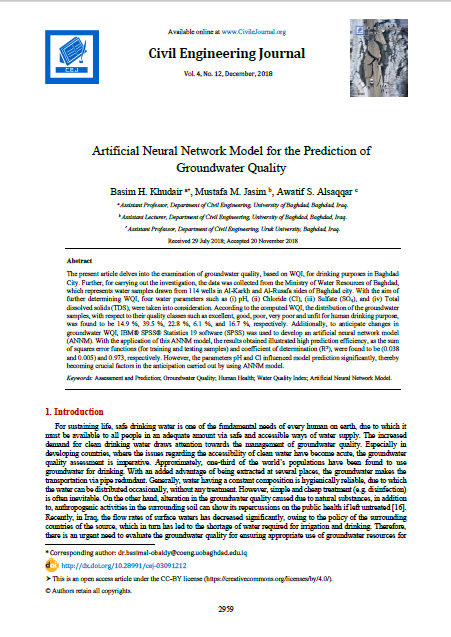
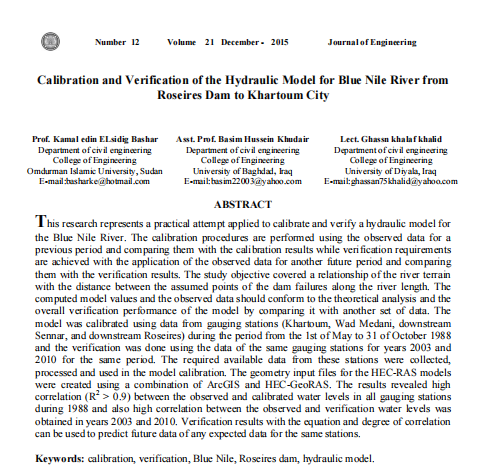
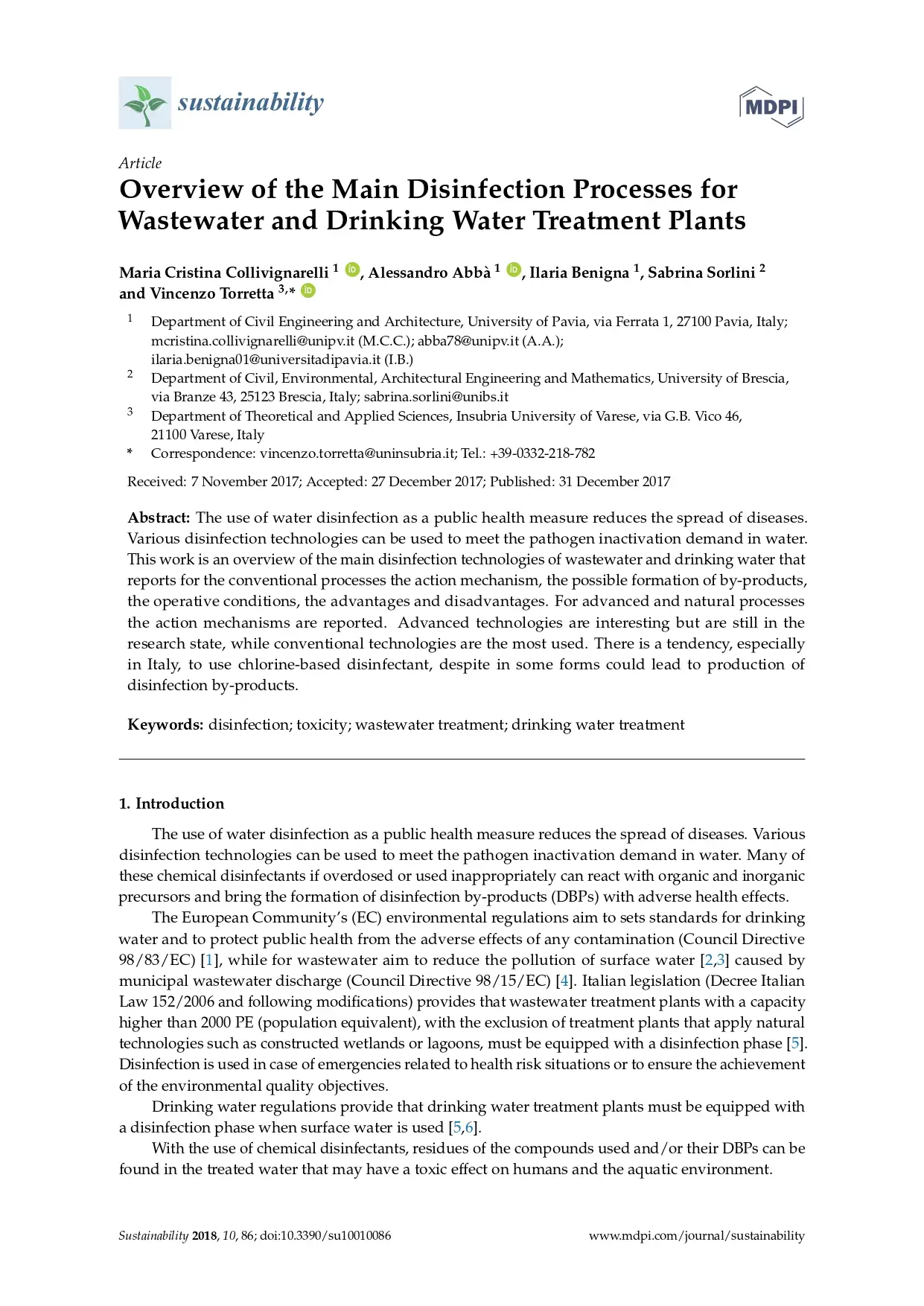
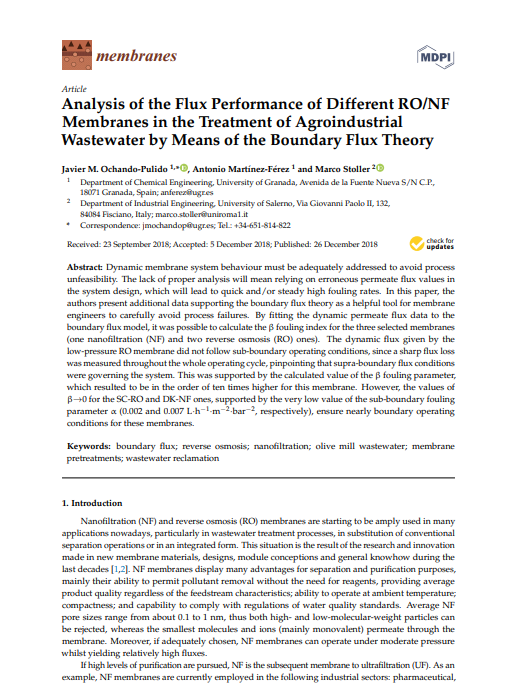
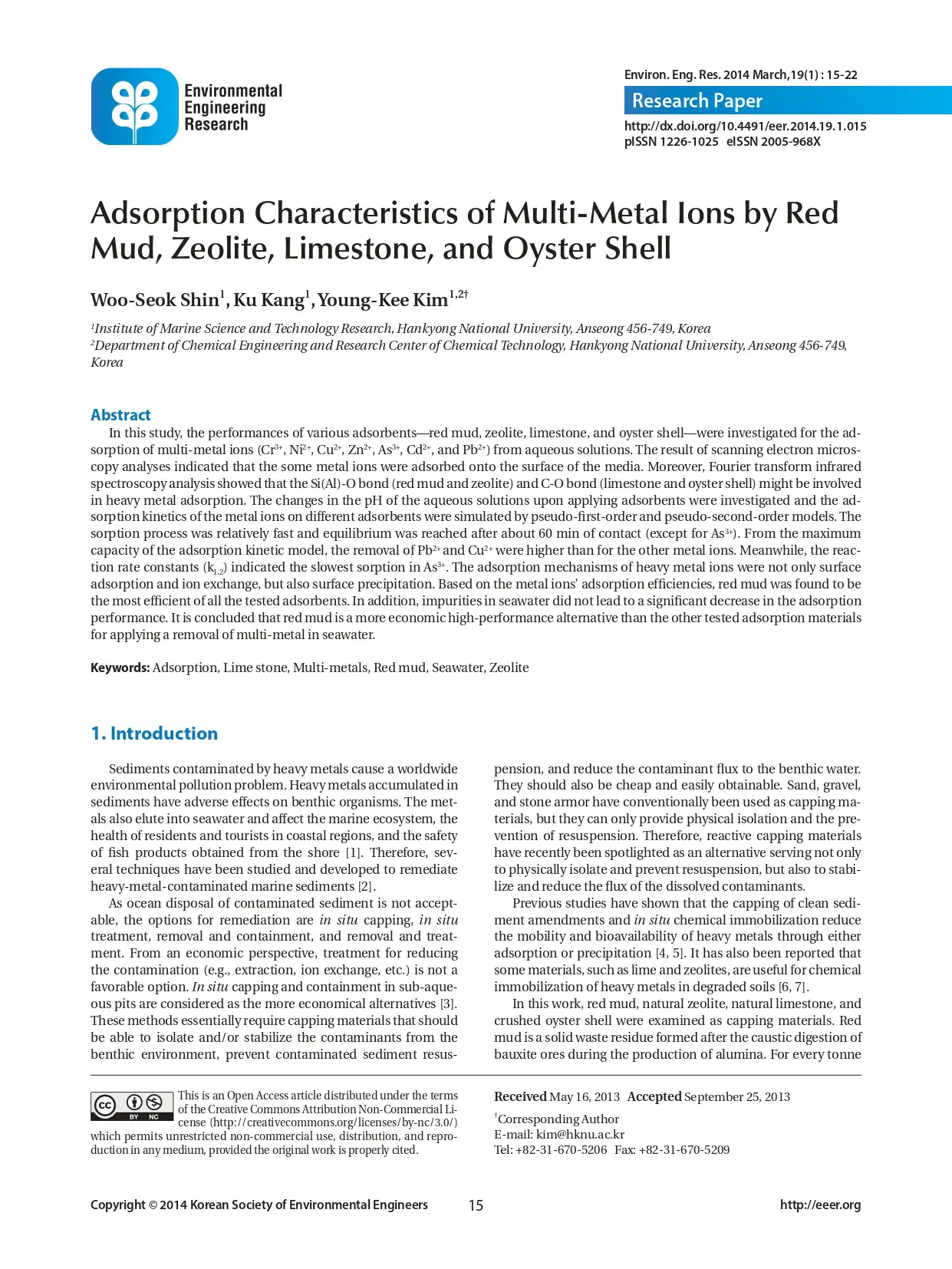
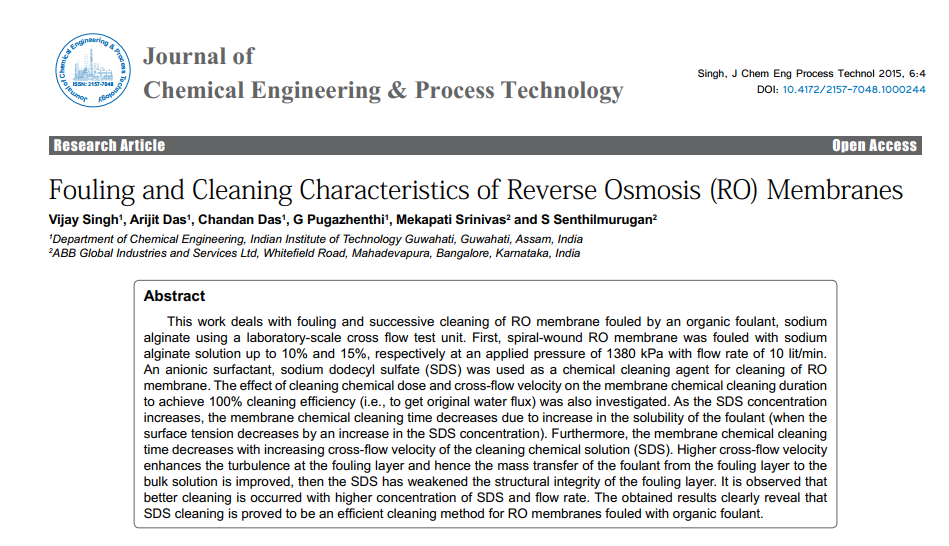
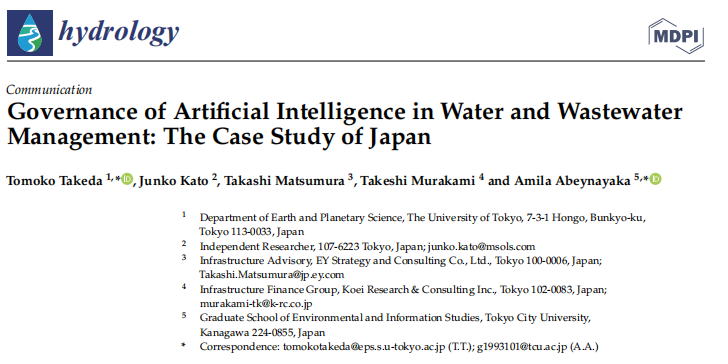
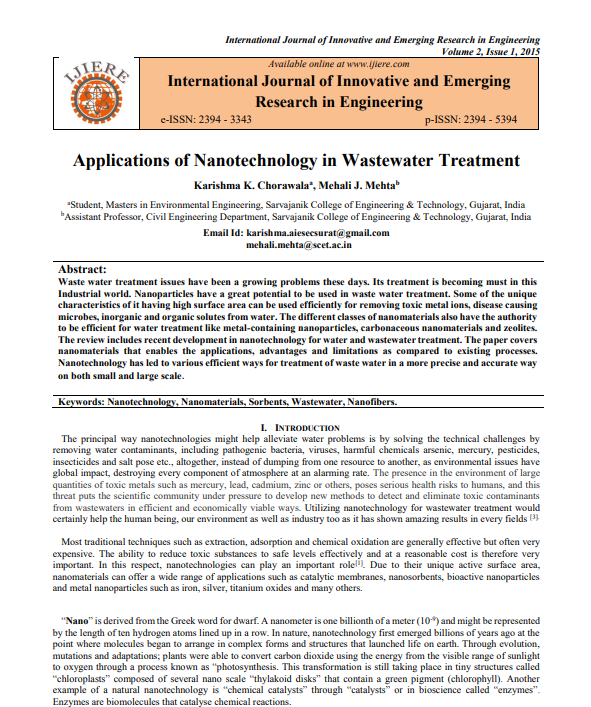
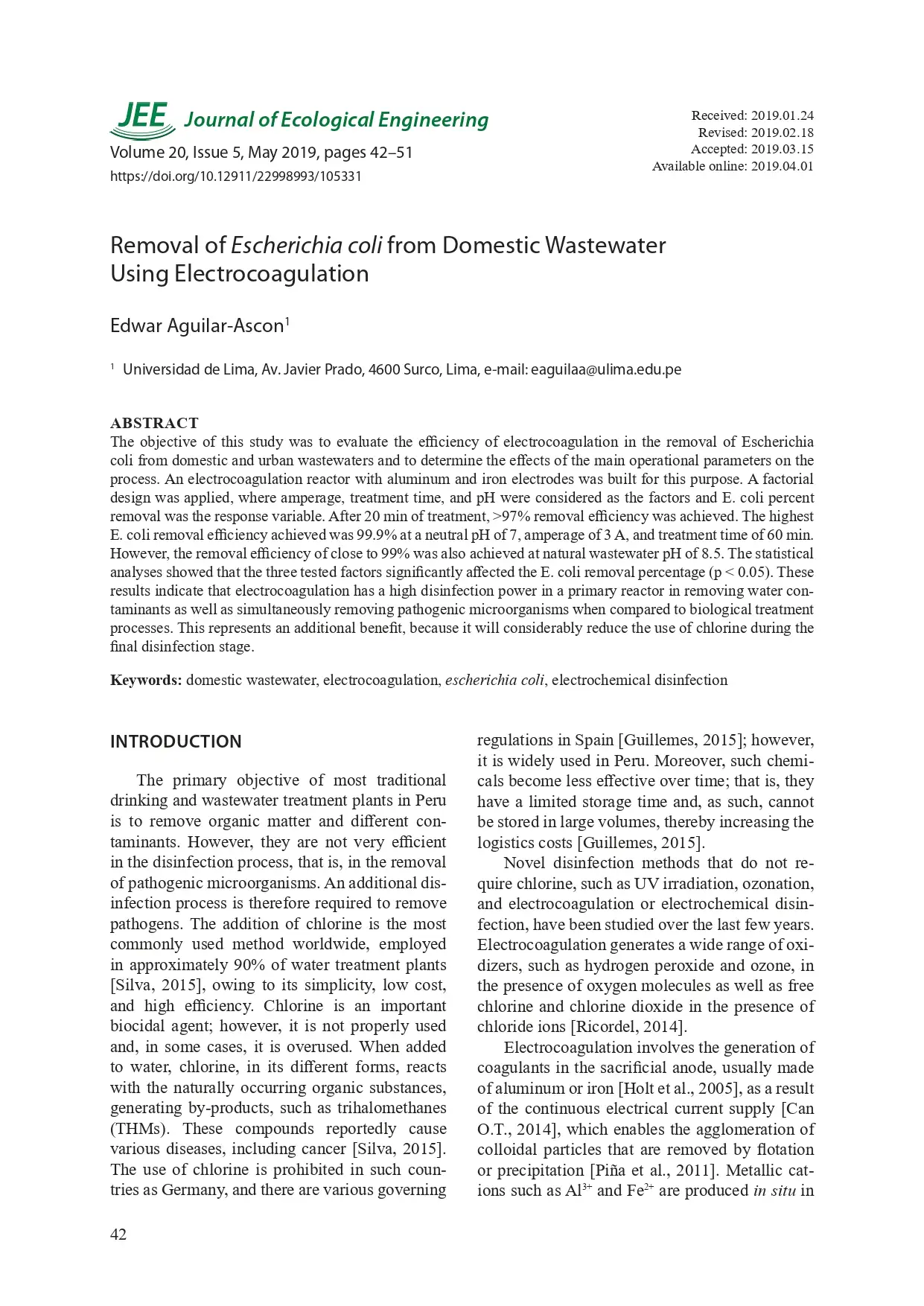
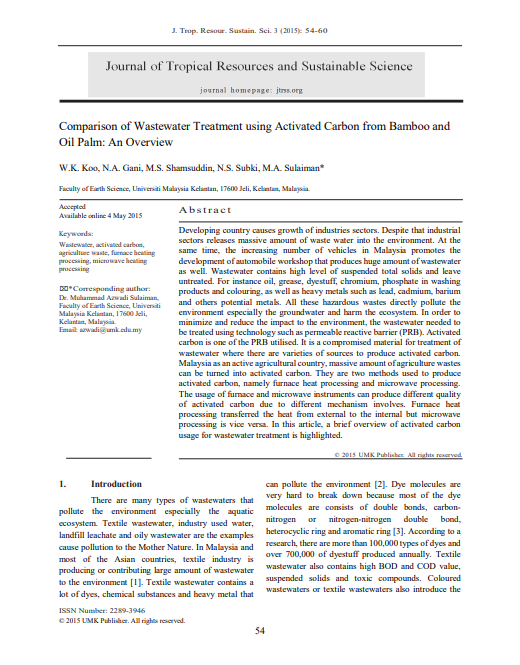
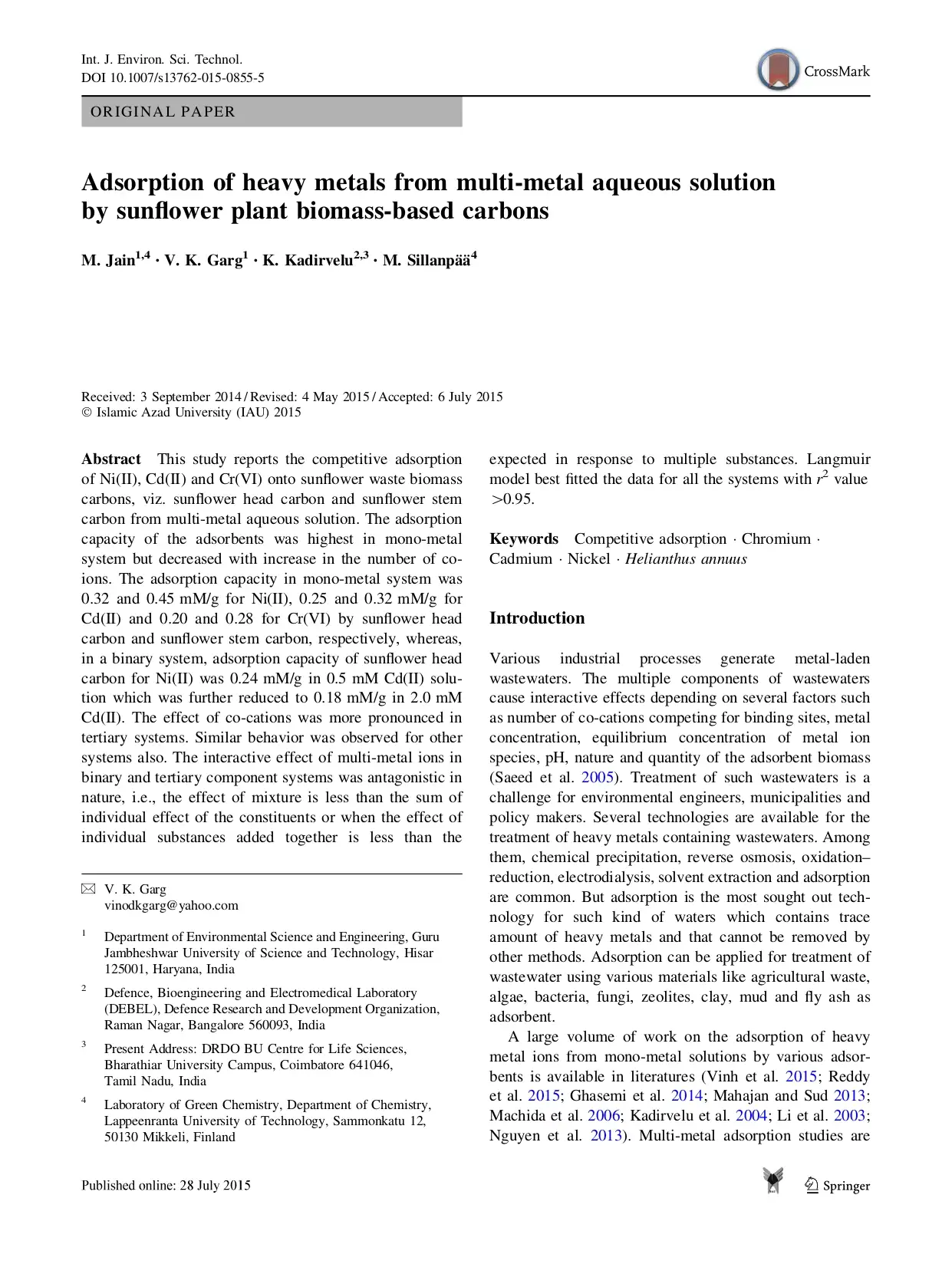
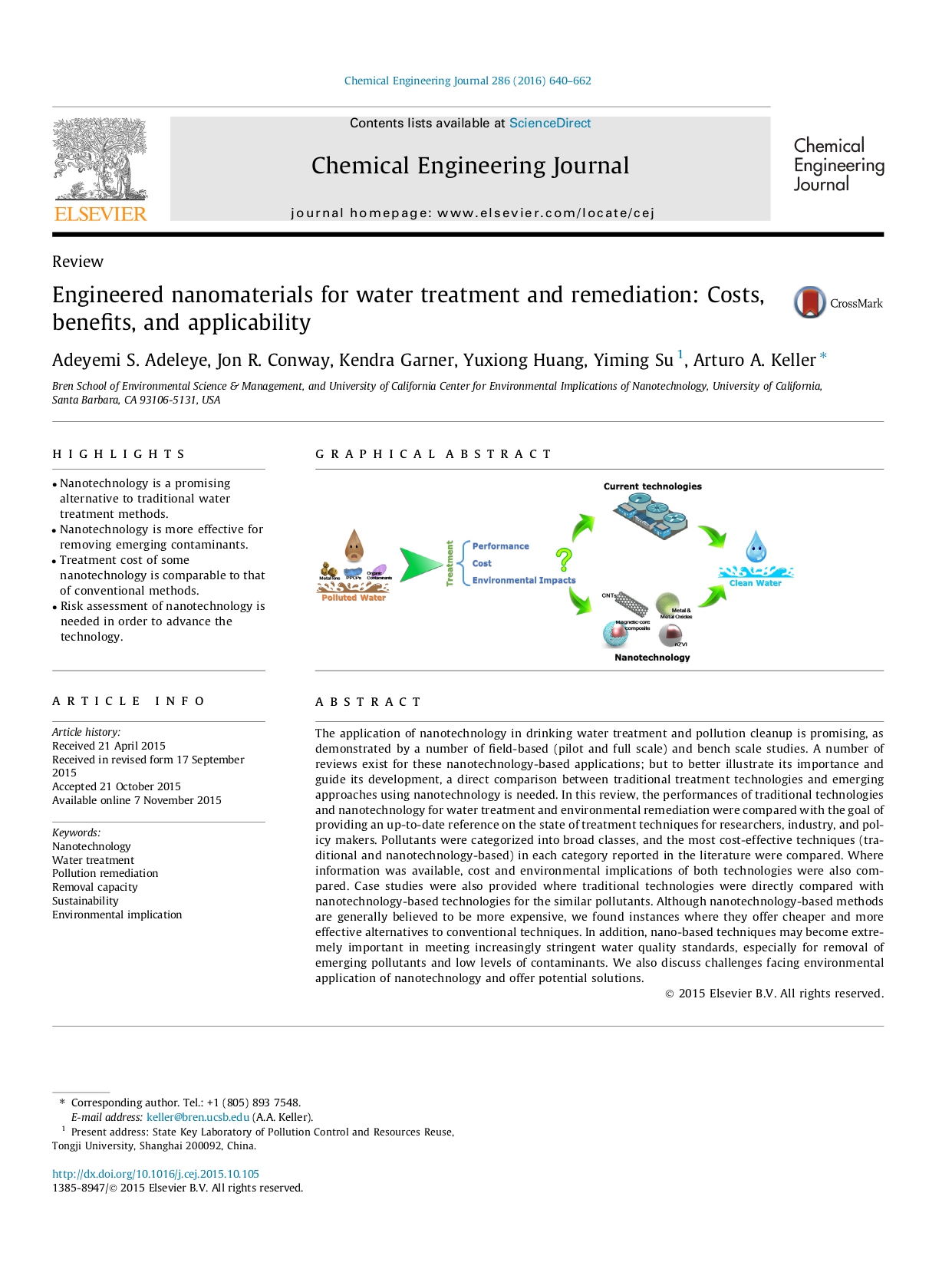
Reviews
There are no reviews yet.